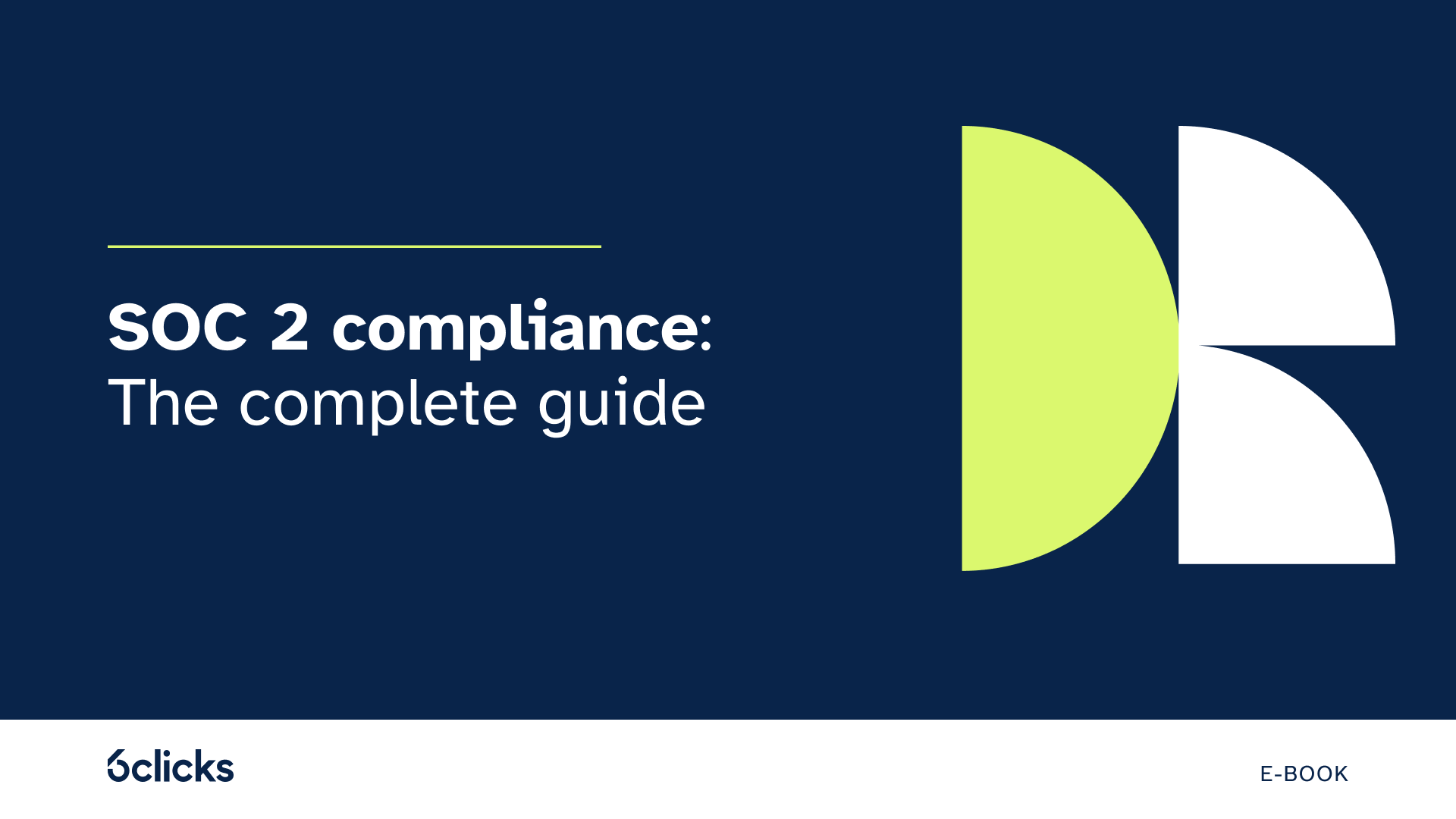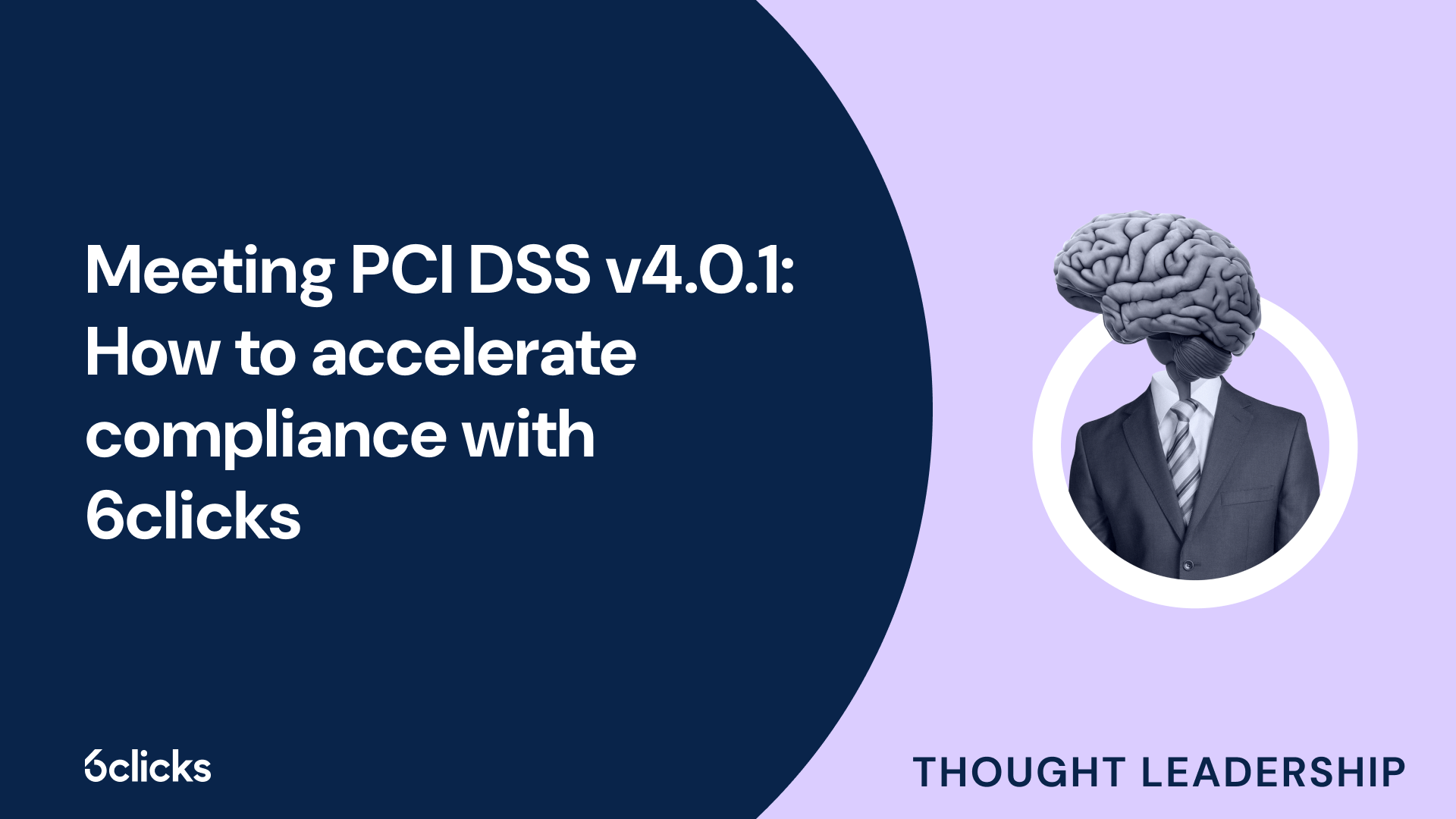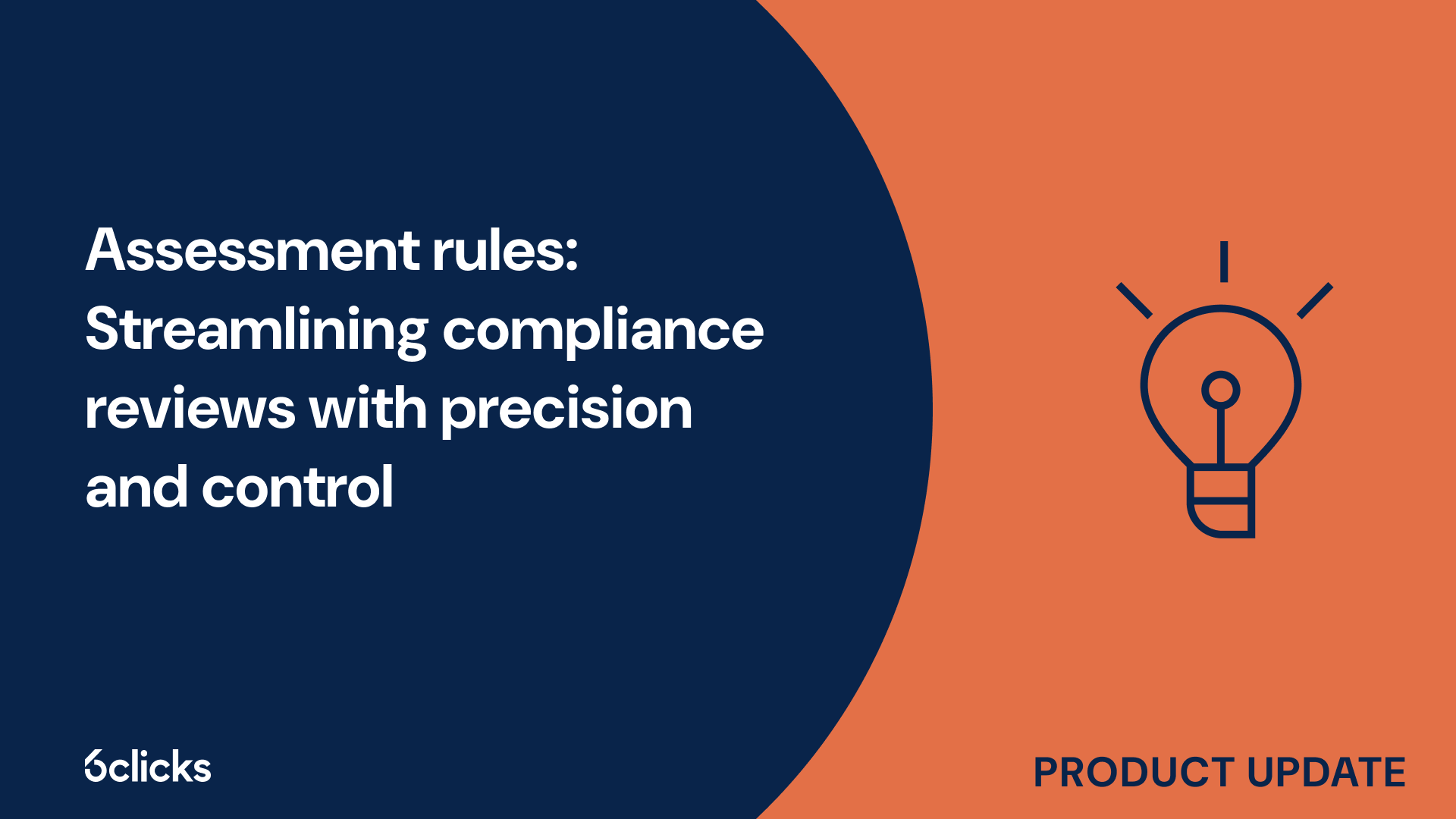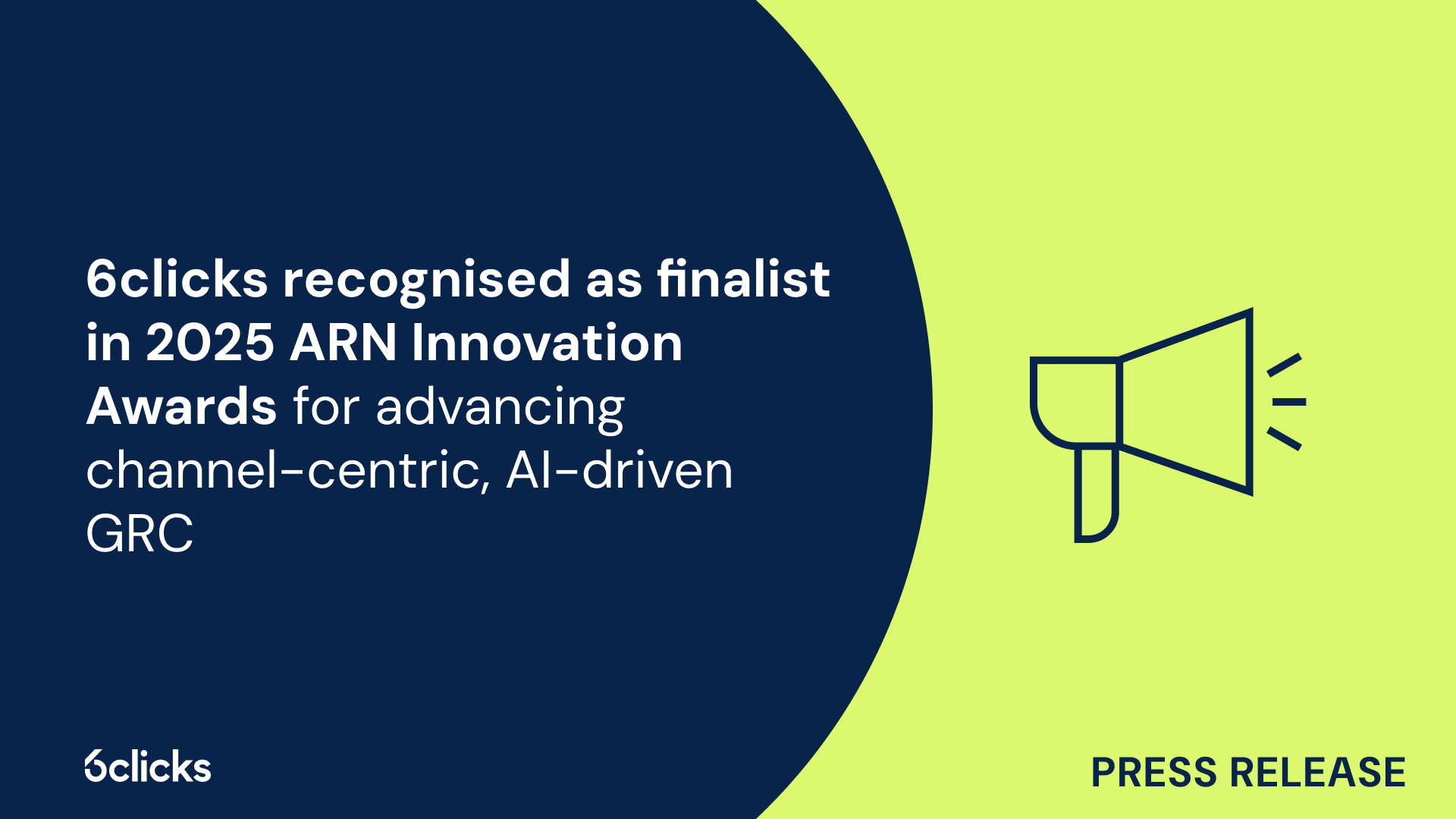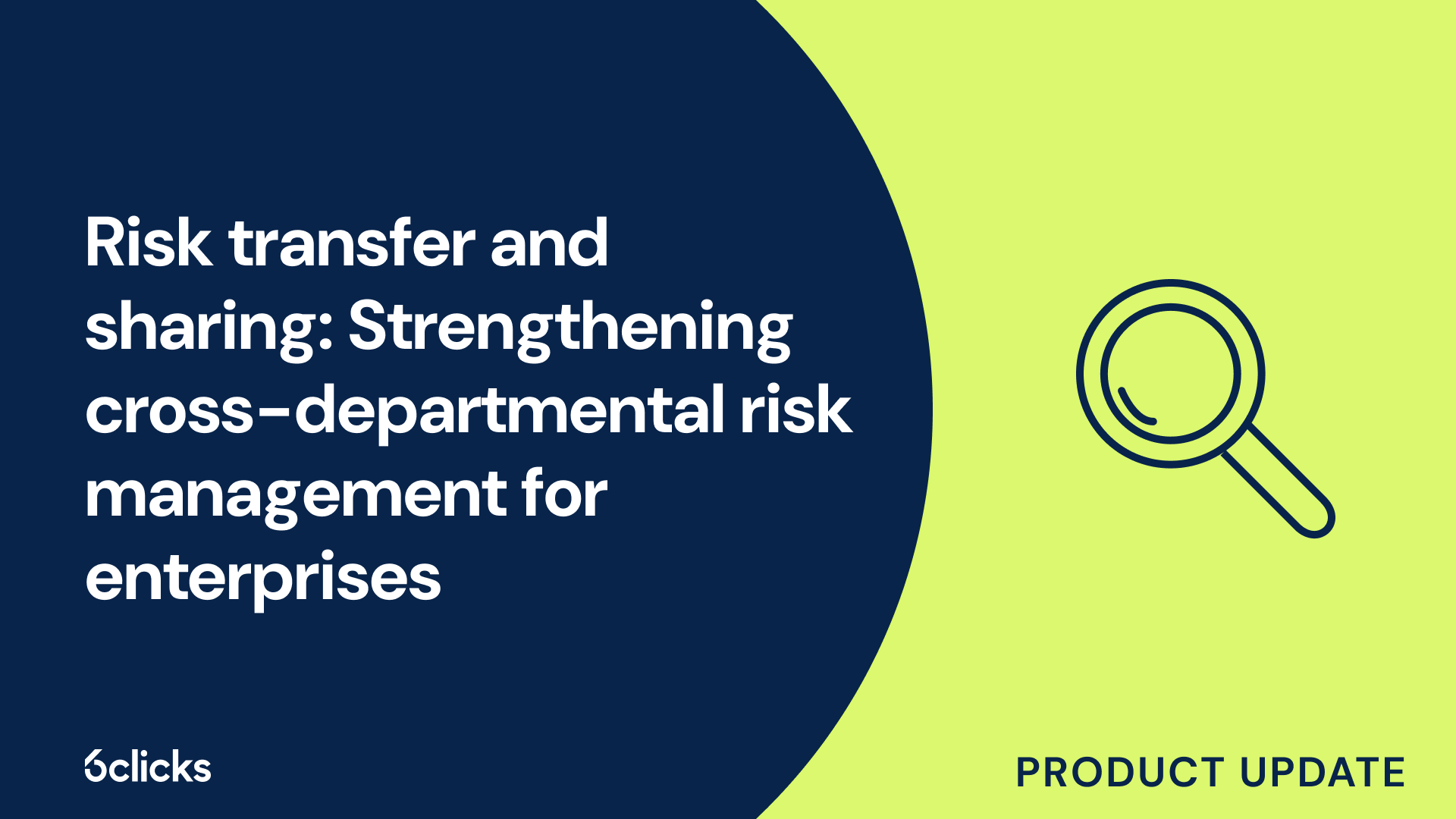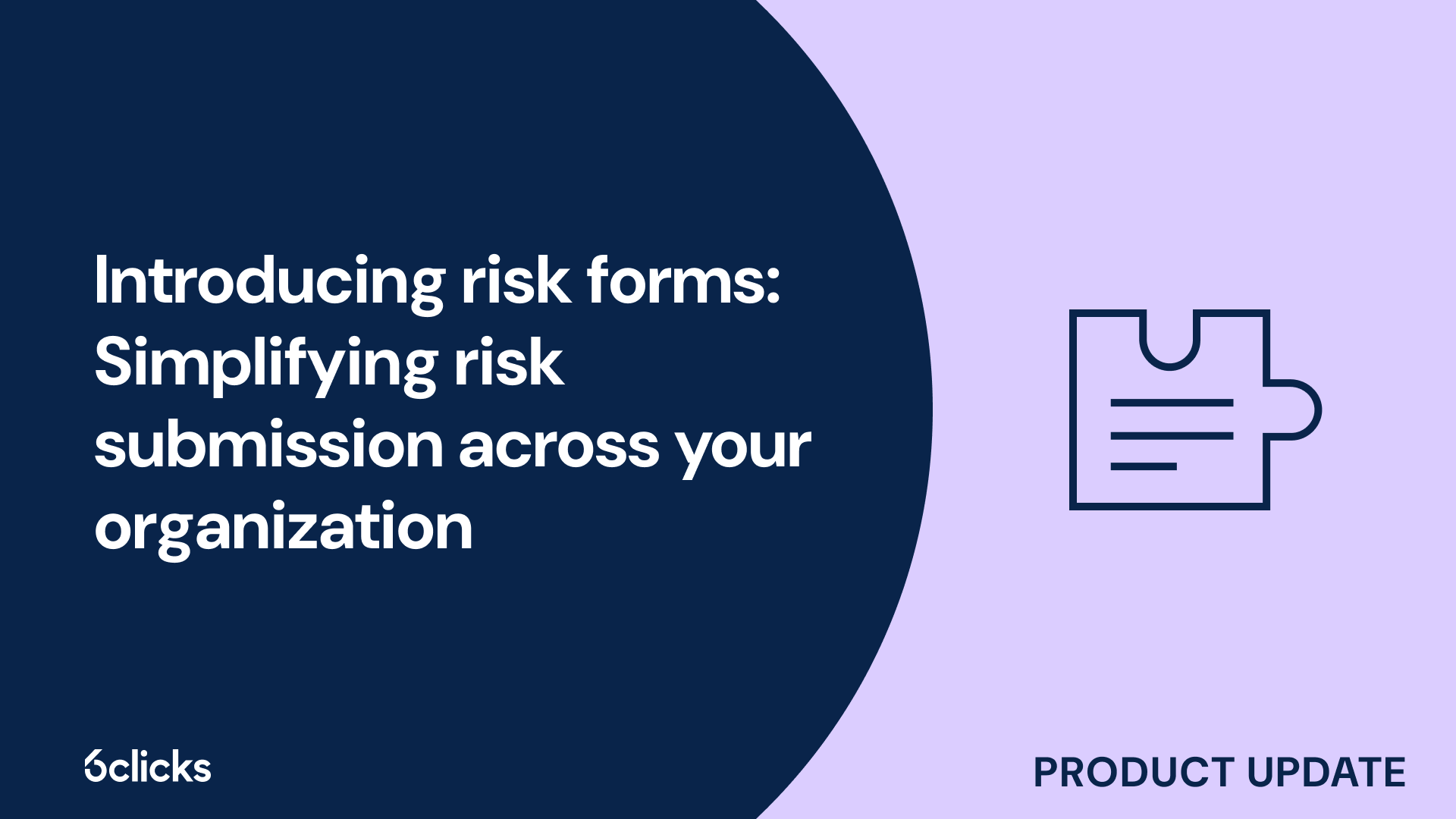Mastering the cybersecurity domain in 2025
Discover how to future-proof your organization’s cybersecurity in 2025. This free guide from 6clicks explores core security domains, regulatory frameworks, and how to integrate GRC for scalable, resilient, and audit-ready programs. Essential reading for CISOs, risk managers, and compliance leaders.
-1.png?width=200&height=249&name=Group%20193%20(1)-1.png)
Mastering the cybersecurity domain in 2025
What is the NIST Cybersecurity Framework and how does it support domain implementation?
TL;DR: The NIST Cybersecurity Framework (CSF) offers a flexible, widely adopted structure for applying the core cybersecurity domains across different industries, enabling organizations to manage cyber risk with clarity and consistency.
As detailed in the 6clicks expert guide Mastering the Cybersecurity Domain in 2025, the NIST Cybersecurity Framework (CSF) is one of the most globally recognized tools for improving an organization’s cybersecurity posture. Developed by the U.S. National Institute of Standards and Technology, it provides a common language and structured approach to identifying, managing, and reducing cybersecurity risk.
The framework is composed of five high-level functions—Identify, Protect, Detect, Respond, and Recover—which directly map to the eight core cybersecurity domains outlined in the guide.
How NIST CSF supports domain implementation:
| NIST CSF Function | Mapped Domain Areas |
|---|---|
| Identify | Security and risk management, asset security |
| Protect | IAM, secure software development, network security |
| Detect | Security operations, monitoring |
| Respond | Incident response, security operations |
| Recover | Governance, continuity, operations review |
NIST CSF is framework-agnostic and compatible with standards like ISO 27001, making it ideal for both private and public sector organizations globally.
Why NIST CSF is valuable in 2025
The new version of NIST CSF (v2.0) emphasizes governance and continuous improvement, addressing the growing complexity of hybrid environments, supply chains, and AI adoption.
Benefits include:
-
Clarity for security and executive teams
-
Scalable maturity models for growing businesses
-
Compatibility with regulations (e.g., CMMC, HIPAA, GDPR)
-
Increased stakeholder confidence and audit readiness
Looking to adopt or operationalize NIST CSF in your organization?
Book a demo with 6clicks today to see how our platform lets you implement, track, and report against NIST CSF—mapping controls directly to your cybersecurity domains and automating evidence collection.



